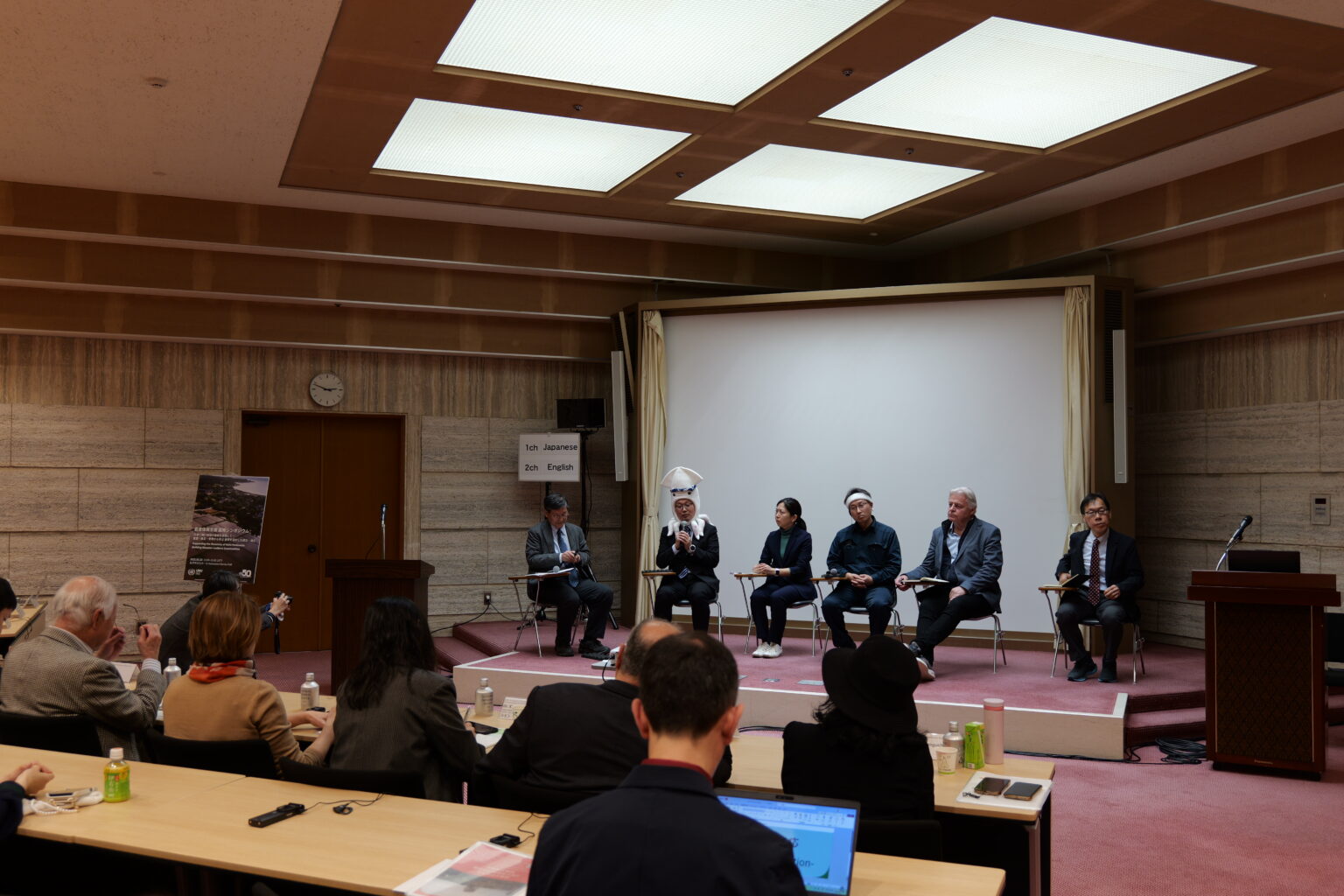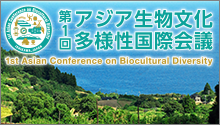On March 20, 2025, the International Symposium “Supporting the Recovery of Noto Peninsula: Building Disaster-Resilient Communities – Lessons from Noto, Tohoku, and the World on Disaster Prevention and Resilience” was held at the Kanazawa Bunka Hall. The symposium aimed to think about the recovery and disaster prevention in the Noto region, which was affected by the 2024 Noto Peninsula Earthquake followed by a record-breaking heavy rainfall.
The event opened with greetings from Shinobu Yamaguchi (Director, UNU-IAS), and Yuichi Kitamura (Deputy Director-General, Ishikawa Prefectural Planning and Development Department). This was followed by keynote speeches from Professor Seiji Yanai (Specially Appointed Professor, Faculty of Bioresources and Environmental Sciences, Ishikawa Prefectural University), Dr. Youssef Nassef (Director, Adaptation Programme, UNFCCC) and Dr. Eva Klaus (Director, Bonn Bundeskunsthalle (Art and Exhibition Hall of the Federal Republic of Germany)).
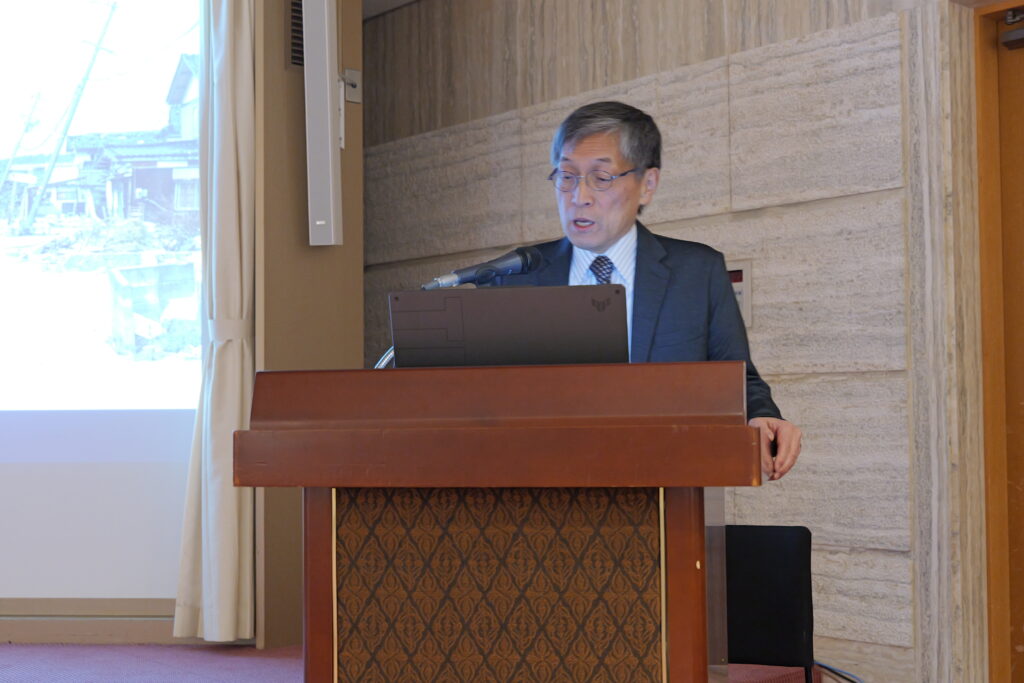
Professor Seiji Yanai discussed the damages caused by earthquakes and heavy rainfall in the Noto region, highlighting changes in the satoyama and satoumi environments, particularly pointing out land uplift and the impacts of heavy rainfall on ecosystems. He emphasized the need to address future challenges such as forest regeneration, sediment control, ecosystem-conscious river environment restoration, and the educational use of uplifted coastlines.
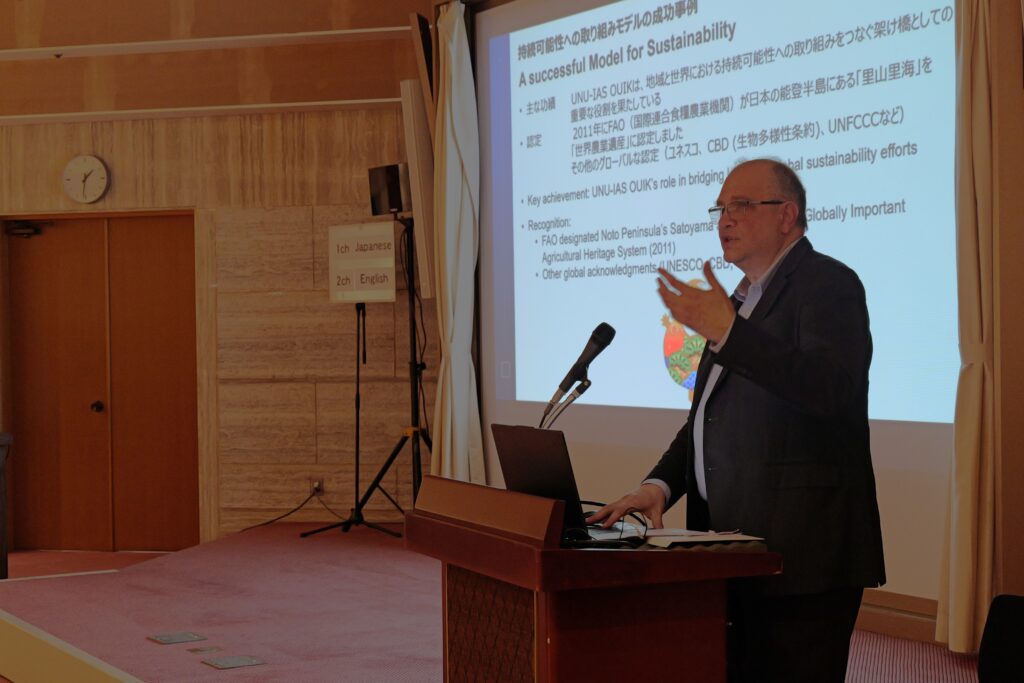
Next, Dr. Youssef Nassef presented on the theme “Nature, Culture, and Livelihoods in a Changing World: Learnings from Noto Peninsula.” He emphasized that the risk of large-scale disasters occurring worldwide is increasing, stating, “We need to review our mindset on recovery and reconstruction.” He shared important lessons learned from the reconstruction efforts in Noto, including the strong community support observed in Noto during and after disasters.
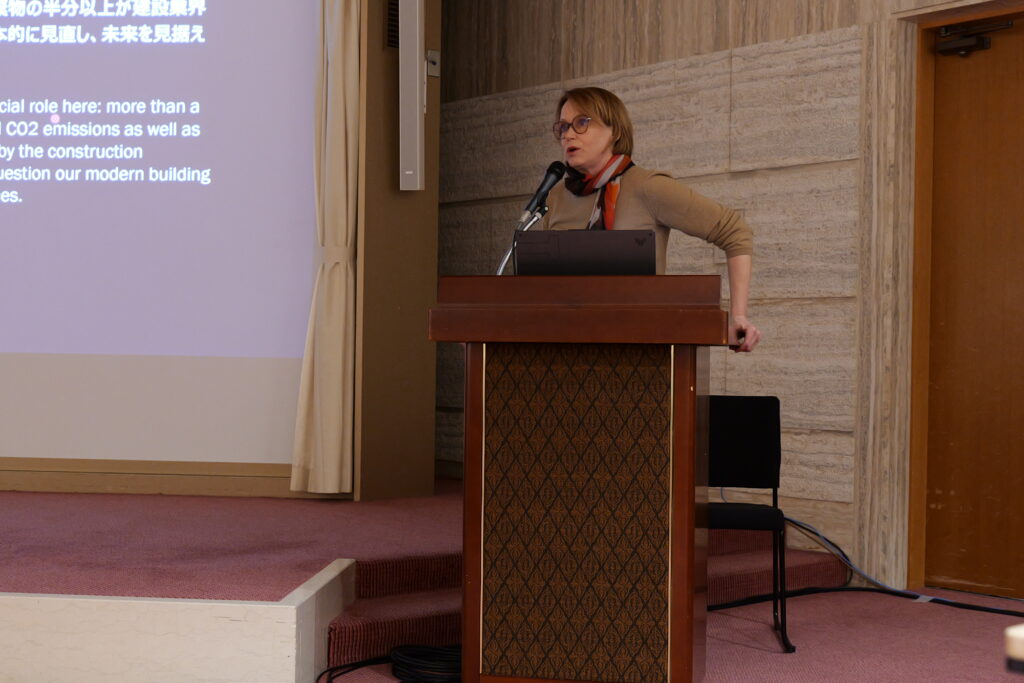
Dr. Eva Klaus discussed “Resilience and Revitalization in European Architecture,” highlighting the importance of measures (preparations) for climate change through examples of creative and sustainable European architecture and the need for reusing building materials.
In the latter half of the symposium, a panel discussion was moderated by Tsunao Watanabe (Visiting Research Fellow, UNU-IAS OUIK). Panelists included Takamitsu Haiya (Noto Town, Recovery Promotion Division), Sayako Koyama (Research Associate, UNU-IAS OUIK), Choichiro Ohno (Representative, Noto Hahaso Co., Ltd.), Thomas Elmquist (Professor, Stockholm Resilience Centre, Stockholm University), and Osamu Saito (Principal Policy Researcher, Biodiversity & Forests, Strategic Management Office, Institute for Global Environmental Strategies (IGES)). The panelists exchanged views based on their experiences on the theme of “Recovery and Disaster Preparedness for Resilient Communities.”
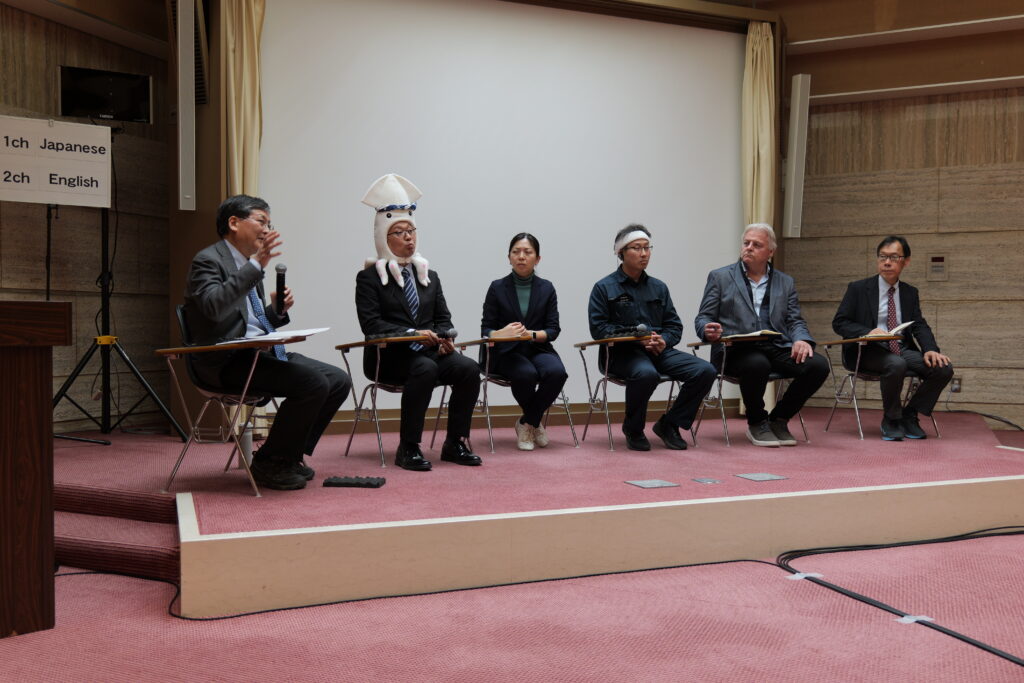
Pannel Session, from left to right: OUIK Visiting Researcher Tsunao Watanabe, Mr. Takamitsu Haiya, OUIK Researcher Sayako Koyama, Mr. Choichiro Ohno, Professor Thomas Elmquist, and Dr. Osamu Saito
Mr. Ohno discussed the difficulties of business continuity after the disaster; Mr. Haiya pointed out the importance of disaster prevention planning that utilizes regional characteristics, and Professor Elmquist emphasized that participating in environmental recovery activities, such as greening disaster sites, through the concept of “Restorative Topophilia” contributes to recovery from psychological trauma and building community connections. Dr. Saito mentioned the potential of the “sharing culture” commonly seen in the Noto Peninsula to support communities during disasters, while Researcher Koyama highlighted the importance of well water and community mutual support.
At the end of the panel discussion, comments were provided by representatives from the Ministry of the Environment and IGES. Mr. Takuya Ishikawa ((Director, Office for Circular and Ecological Economy, Ministry of the Environment) expressed that the natural resources in the Noto region—such as wells and simple water supply systems—are directly linked to strengthening community resilience, while also acknowledging that many challenges remain in the recovery process. Additionally, Dr. Kazuhiko Takeuchi (President, IGES), stated that the natural regeneration of ecosystems and efforts to restore people’s lives will be ongoing challenges in advancing disaster recovery and stressed the importance of working with local communities to achieve a sustainable future.
To conclude the symposium, Dr. Xiaomeng Shen (Vice-Rector in Europe, UNU-VIE; Director, UNU-EHS), explained that the kanji for “adaptation” (適応 tekiou) carries the meaning of moving forward with an open heart in the face of change, and that the kanji for “hope” (希望 kibou) signifies the anticipation of a new era. She asserted that maintaining hope for the beginning of a new chapter with an open heart is essential for realizing long-term resilience and recovery.
The symposium was co-hosted by UNU-IAS, the Ministry of the Environment, Japan (MOEJ), Ishikawa Prefecture, the Institute for Global Environmental Strategies (IGES), and the Japan Foundation for United Nations University (JFUNU). It was supported by the Ecology and Civil Engineering Society (ECESJ), the Japanese Institute of Landscape Architecture (JILA), the Japan Conference on the Implementation of the 2030 Biodiversity Framework (J-GBF), the Keidanren Committee on Nature Conservation, the Environmental Restoration and Conservation Agency (ERCA), AEON Environmental Foundation, the Japan Society of Landscape Ecology (JALE), the Environment Research and Technology Development Fund S21, the Hokkoku Shimbun and the Hokuriku Chunichi Shimbun.
For more information, please watch the following video (recording of the symposium).
※Related Articles (UNU-IAS website)
・Symposium Discusses Disaster Recovery For Resilient Communities | United Nations University
・Japanese Newspapers Feature Symposium on Noto Peninsula Recovery | United Nations University


